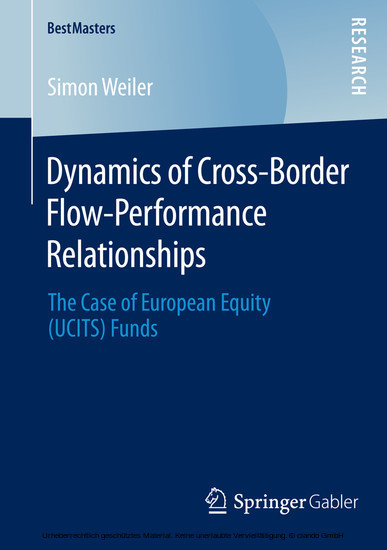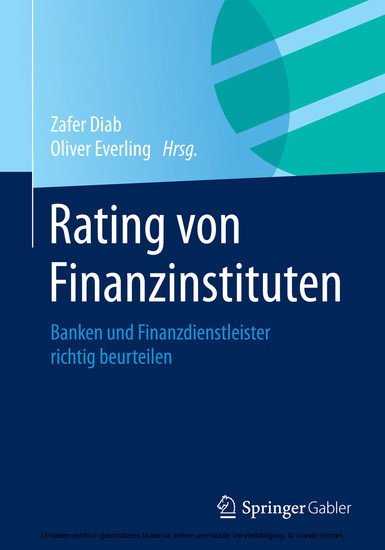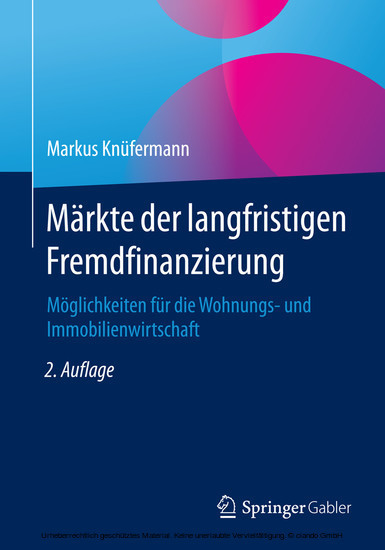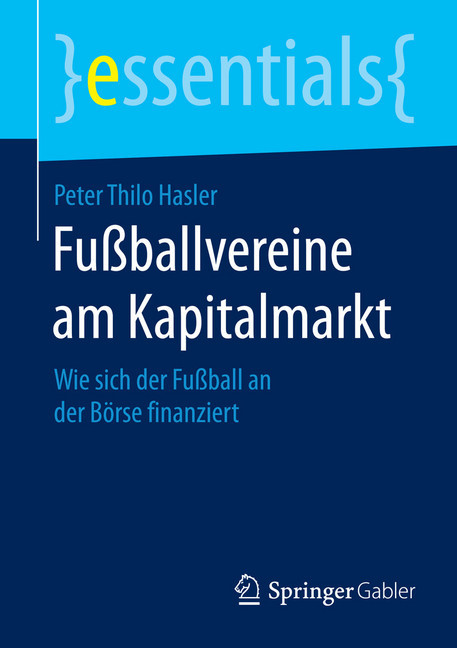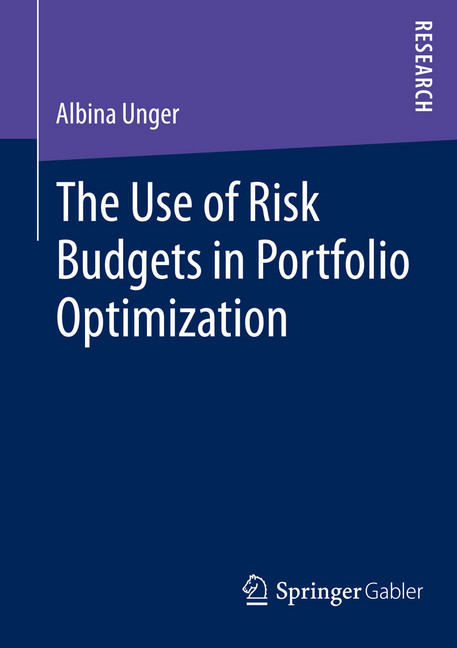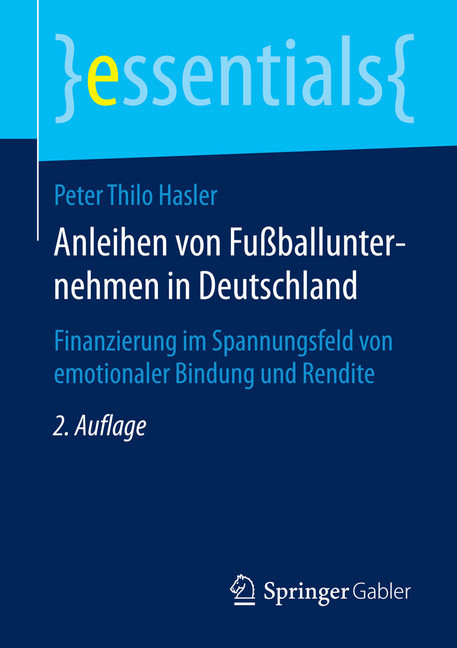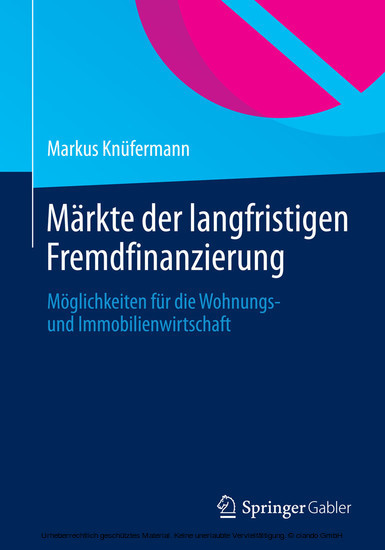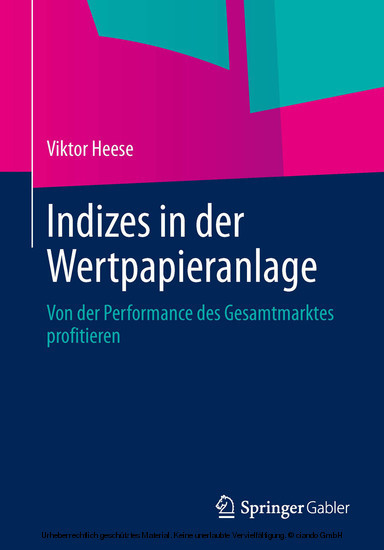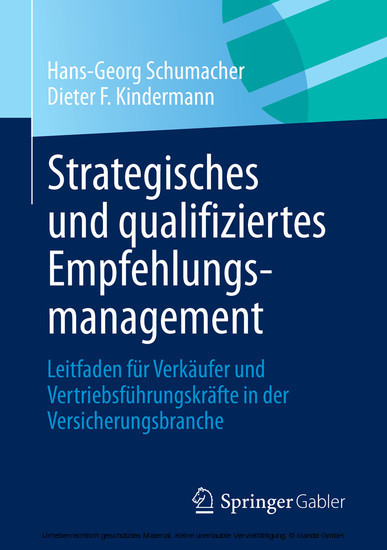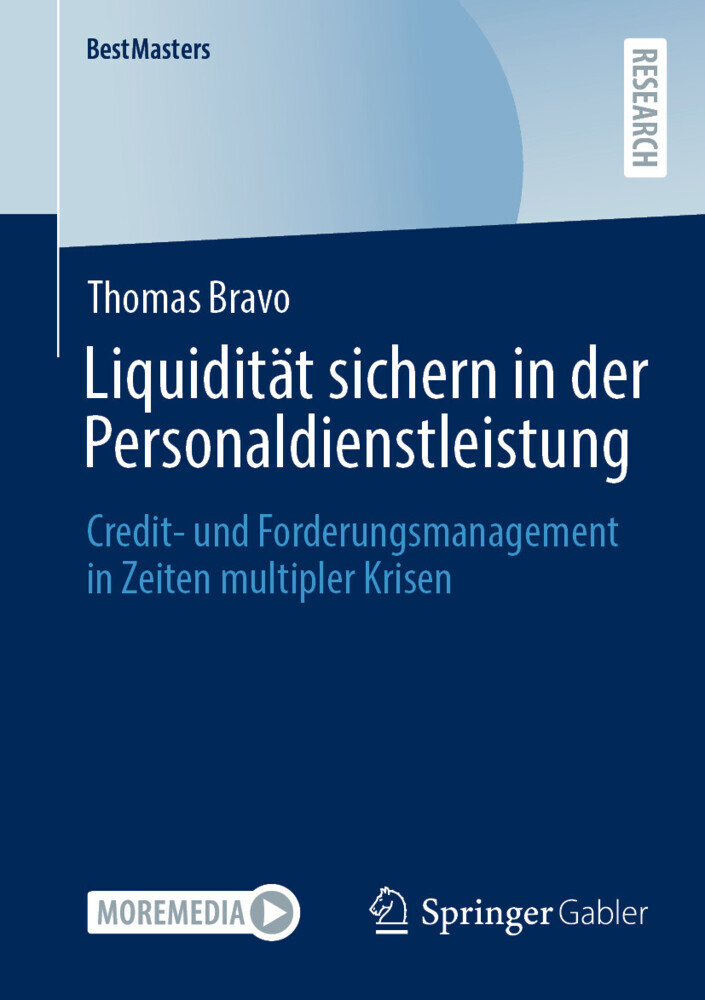Dynamics of Cross-Border Flow-Performance Relationships
The Case of European Equity (UCITS) Funds
Dynamics of Cross-Border Flow-Performance Relationships
The Case of European Equity (UCITS) Funds
In order to measure the dynamics of flow-performance relationships for a multi-domicile sample, Simon Weiler applies existing flow-performance research methods to a broad set of European equity (UCITS) funds and proves that major findings (performance-chasing behaviour and a convex flow-performance relationship) also hold true in a cross-border market environment.
Simon Weiler works as a research analyst and consultant for an international fund research and information provider.
Simon Weiler works as a research analyst and consultant for an international fund research and information provider.
1;Table of contents;6 2;List of tables;9 3;List of illustrations;10 4;List of appendices;12 5;Abbreviations;13 6;Abstract;14 7;1. Introduction;15 7.1;1.1. Problem outline and significance;15 7.2;1.2. Review of comparable and related research;17 7.3;1.3. Research questions and hypotheses;20 7.4;1.4. Set up & structure;23 7.5;1.5. Primary sources;26 8;2. Properties of the mutual fund industry;28 8.1;2.1. Properties of mutual funds;28 8.1.1;2.1.1. Purpose and benefits of mutual funds;28 8.1.2;2.1.2. Active versus passive mutual funds;29 8.1.3;2.1.3. Open-ended versus closed-end funds;30 8.1.4;2.1.4. Justification for existence;31 8.2;2.2. Market development and competition;32 8.2.1;2.2.1. Market size and development: Global;32 8.2.2;2.2.2. Market size and development: Europe;34 8.2.3;2.2.3. Competition within the European fund industry;38 8.3;2.3. Economies of scale;42 8.4;2.4. Boutique versus large fund management companies;43 9;3. Outperformance & performance persistence;46 9.1;3.1. How to identify outperformers;46 9.1.1;3.1.1. Asset class classifications;46 9.1.2;3.1.2. Performance evaluation;47 9.2;3.2. Persistence of mutual fund returns;51 9.3;3.3. Life-cycle theory;53 10;4. Investor behavior;56 10.1;4.1. Behavioral finance and the flow-performance relationship;56 10.2;4.2. Incorporating investor irrationalities in quantitative models;58 11;5. Methodology & definitions;59 11.1;5.1. Empirical set up;59 11.1.1;5.1.1. Data source;59 11.1.2;5.1.2. Data horizon and frequency;60 11.1.3;5.1.3. Data focus & sample limitations;61 11.1.4;5.1.4. Required data types;64 11.2;5.2. Data sample;67 11.3;5.3. Quantitative methods;70 11.3.1;5.3.1. General remarks;70 11.3.2;5.3.2. Correlation models;72 11.3.3;5.3.3. Regression models;74 12;6. Time series analysis;78 12.1;6.1. Correlation analysis;78 12.2;6.2. Bivariate linear regression analysis;84 12.3;6.3. Multivariate linear regression analysis;89 13;7. Empiric evidence;93 13.1;7.1. Research question & hypothesis 1;93 13.1.1;7.1.1. Research question & hypothesis 1.1;93 13.1.2;7.1.2. Research question & hypothesis 1.2;94 13.2;7.2. Research question & hypothesis 2;95 13.3;7.3. Research question & hypothesis 3;95 14;Conclusion;97 15;Bibliography;99 16;Appendix A: correlation-test details: flow~percentage growth;104 17;Appendix B: correlation-test details: flow~volatility;105 18;Appendix C: correlation-test details: flow~Sharpe ratio;106 19;Appendix D: geographical database coverage: Lipper for Investment Management;107
Weiler, Simon
| ISBN | 9783658081546 |
|---|---|
| Artikelnummer | 9783658081546 |
| Medientyp | E-Book - PDF |
| Auflage | 2. Aufl. |
| Copyrightjahr | 2014 |
| Verlag | Springer Gabler |
| Umfang | 107 Seiten |
| Sprache | Englisch |
| Kopierschutz | Digitales Wasserzeichen |

